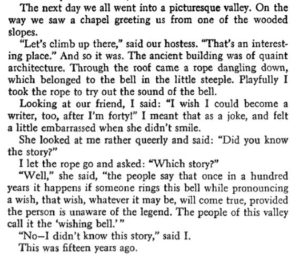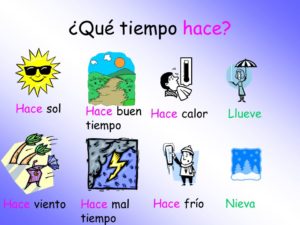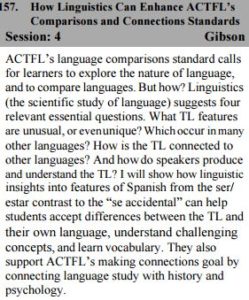One advantage of living in our leafy but boring suburb is that I am only a short train ride away from the Instituto Cervantes in Manhattan. This has enabled me to easily attend events such as the U.S. inauguration of the Real Academia Española’s revised dictionary — the first major revision since the elimination of ch and ll — and a recent talk about Spanish in the United States.
Last night the Instituto Cervantes hosted a major celebrity: Maria Dueñas, the author of the bestselling Spanish novels El tiempo entre costuras ‘The Time in Between’, Misión Olvido ‘The Heart Has its Reasons’, and La Templanza ‘The Vineyard’. The specific purpose of the event was to celebrate the U.S. publication of ‘The Vineyard’ in English. Sra. Dueñas also gave us a ‘heads-up’ about her fourth novel, now in progress, which concerns Spanish immigrants living in New York in the first part of the 20th century.
I’ve read and enjoyed all three of Sra. Dueñas’s books (I previously blogged about El tiempo entre costuras here). Beyond this, I feel a connection with her because we have a lot in common. We are both middle-aged moms and academics (she was at the University of Murcia) who specialized in the linguistics of the other’s language (she studied and taught English applied linguistics) and who wrote a first book relatively late in life (she in her 40s, I in my 50s). The glaring difference, of course, is that her first book was an instant bestseller that has been translated into 35 languages and turned into a hit telenovela, whereas I’d be happy with continuing respectable sales of ¿Por qué? But still.
Her first book’s origin story, as she described it at the event, was remarkable. El tiempo entre costuras takes place partly in Madrid and partly in Morocco during the Spanish protectorate there. Some of her family members had lived in Spanish Morocco, and she grew up hearing their stories. While enjoying a peaceful sabbatical in — of all places — Morgantown, West Virginia (a great place to live, according to friends) — she decided to write a novel set in that time and place. She had never written any fiction and had no connections in the publishing world. Nevertheless, after years of painstaking research and writing, she found a publisher who committed to a first imprint of 3500 copies, and within weeks the book took off via word of mouth.
This anecdote reminded me of the preface to one of my perennial favorite books, Maria Von Trapp’s The Story of the Trapp Family Singers, which was the inspiration for The Sound of Music. Mrs. Von Trapp describes a visit with a friend who had written her first book in her forties:

I don’t know whether Sra. Dueñas ever pulled on a wishing bell — but sometimes, I guess, wishes do come true.





